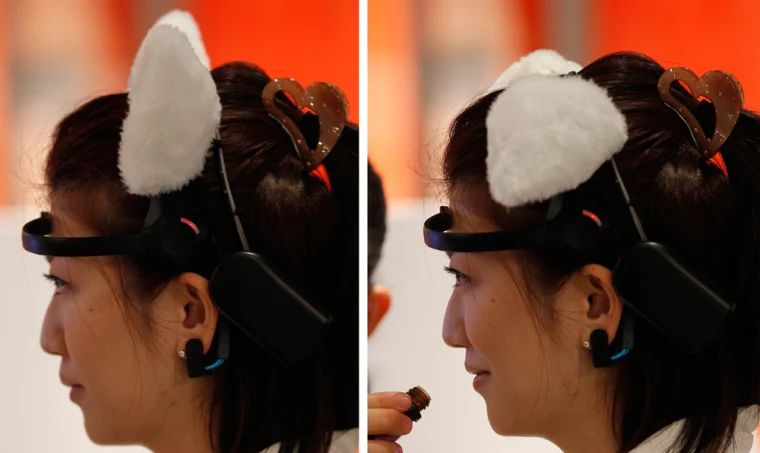What Is Cat Ear Hair For?
Cat ear hair, also known as ear furnishings, refers to the longer fur found on the inside of cat ears. While cat ear hair may seem purely decorative, it actually serves several important purposes for cats.
Cat ear hair helps keep their ears warm and protected. The longer fur traps heat inside the ear canal and shields the delicate inner ear from dust, dirt, and other irritants. The fur also helps whisk moisture out of the ears, preventing bacteria growth and infections.
Additionally, cat ear hair aids communication. Cats can position and flick their ear hair to convey mood and reactions. The hair gives visual cues to other animals about how a cat is feeling. Certain ear positions, such as ears flat back against the head, signal an aggressive or fearful cat. Perked up ears with forward-facing hair often indicate curiosity and friendliness.
In summary, cat ear hair may look cute and decorative, but it serves essential functions for cat health, communication, and sensory abilities.
Keeping Ears Warm
Cats’ ears are thin and lose heat quickly, so the hair in and around their ears helps insulate them and keep them warm (Oxyfresh1). The blood vessels in a cat’s ears are close to the surface, allowing heat to radiate out. This is why cats’ ears often feel warm or hot to the touch. The fur on the ears helps trap that heat and prevent too much from escaping. Cats rely on their ears to regulate body temperature, so the hair in and around the ears plays an important thermoregulatory role. Ear hair helps cats retain heat in cold environments and release heat in hot environments. The tufts of fur protruding from the ears, known as ear furnishings, are particularly dense and useful for insulation. Overall, the hair on cats’ ears helps them maintain a stable body temperature as the ambient temperature fluctuates.
Expressing Mood

Cat ears move and position in various ways to communicate mood and emotion. The ear hair plays an important role emphasizing these movements to make the cat’s feelings perfectly clear. When content, relaxed, or friendly, a cat’s ears will be erect and forward facing. The furry tufts on top help reflect the cat’s positive emotional state. However, when angry, fearful, anxious or aroused, a cat’s ears will flatten back against the head, with ear tufts also flatten down. This shows others that kitty is feeling negatively or threatened. The ear hair slicked back emphasizes the mad or scared mood the cat is in. Subtle shifts in ear angles or positions, along with the corresponding motion of the fur tufts, allow cats an intricate range of mood communication. Learning to read these ear signals helps owners better understand what their cat is feeling or needing in the moment.
Hearing Aid
Some cats may develop hearing loss or be born deaf. To help cats with hearing difficulties, specialized hearing aids have been designed for cats. These devices are small and fit snugly in the cat’s ear canal where they can amplify quiet sounds and funnel them into the ear.
The cat hearing aid consists of a tiny microphone, amplifier, and speaker embedded in a lightweight casing that rests in the outer ear. According to Audicus, the casing is usually made of titanium for durability and biocompatibility. The hearing aid acts to collect sounds from the environment, amplify them to an appropriate loudness level, and transmit them into the ear canal so they can be heard by cats with hearing loss.
These specialized cat hearing aids help compensate for hearing deficits and allow hard of hearing cats to once again detect important sounds around them. With amplified sound provided directly into the ear canal, cats can regain awareness and respond to sounds like food dishes rattling, doors opening, or their names being called.
Protection
Cat ears are very sensitive, so the hair on the outer ear provides protection for the inner ear. It helps shield the ear canal from dirt, debris, moisture, and foreign objects that could potentially cause irritation or infection if they got inside (Source). The hairs catch and trap particles before they can enter the ear canal.
Some cat owners will use special ear muffs or wraps on their cats when bathing them or taking them swimming. These accessories wrap around the ears and prevent water from getting inside while allowing cats to still hear. Products like the Feline No Flap Ear Wrap are designed to shield the delicate inner ear from moisture, grass, pollen, and other irritants (Source). The hair on the outer ear provides a natural protective barrier, while accessories can give additional coverage.
Identification
A cat’s ear hair can help identify it. Each cat has a unique pattern of ear furnishings that helps it recognize other cats it knows.1 This allows cats in the same social group to identify each other even from a distance simply by their ear hair patterns. The complex mix of stripes, spots, and swirls in each cat’s ear hair is like a feline fingerprint. Ear hair patterns are formed randomly as the cat develops in the womb and do not change over its lifetime, allowing for lifelong identification.
Intimidation
The long fur on cats’ ears serves an intimidation purpose to make cats appear fiercer and larger to potential rivals. The ear tufts stick straight up when a cat is feeling threatened or aggressive, making their silhouette seem bigger. This is similar to how other animals like foxes and wolves will fluff out their fur to appear larger and more dangerous in confrontations over territory or mates.
As discussed on Reddit, the ear tufts are “some kinda sex/mating or intimidation thing like bird feathers” (source). When confronted, cats will flatten their ears back against their head, and the long ear fur exaggerates this motion to make them look fierce. So the ear tufts serve a practical purpose for cat communication and deterring rivals by making them look as big and intimidating as possible.
Camouflage
Cat ear hair can serve an important camouflage function for cats in the wild. Cats have upright, pointed ears that can give away their position while hunting or hiding. Flattened ear tufts and fur help conceal the distinctive ear shape and blend into the surroundings. Certain patterns and colors in cat ear hair aid camouflage in specific environments. For example, tabby cat markings mimic patches of sunlight and shadows on the forest floor, providing concealment when stalking prey amidst dappled light. The muted browns and grays of a bobcat’s ears allow it to blend into rocky or grassy terrain. The tan fur on a lion’s ears helps it sneak through dry savanna grasses towards prey. Domestic cats may retain some of these advantageous camouflage patterns and colors in their ear tufts and fur. Sources indicate cat ear hair likely evolved not just for hearing, but for concealment and stealth hunting abilities as well.
Source: https://www.etsy.com/market/camo_cat_ears
Cuteness
A cat’s ears are an important part of what makes them so adorable to humans. The large, pointed, upright ears with fur tufts contribute greatly to a cat’s endearing appearance. Their prominent ears allow cats to make subtle expressions that owners find cute. Ear movements and positions convey a cat’s mood and desires. When cats perk their ears up and tilt them slightly forward, it signals interest, excitement or intent. The alert ear position adds to their eager and enthusiastic look that melts hearts.
Floppy or folded ears are especially associated with cuteness in cats. Folding their ears back against the head is part of a cat’s body language indicating affection, contentment, trust, and relaxation. A cat holds its ears in a folded position when being petted by trusted humans. The folded ears complement their blissful facial expressions and convey deep happiness. It amplifies the feelings of sweetness and connection between cats and their owners.
The prominent ear tufts also amplify cuteness. Longer fur around the ears sways with head movements, emphasizing the ears’ changing positions. When cats perk their tufted ears up, it highlights their enthusiasm and bright mood. The tufts also frame the face in fluffy cuteness. Ear tufts contribute to the cat’s soft, cuddly appearance that humans find comforting and endearing.
Conclusion
In summary, cat ear hair serves multiple important purposes for cats. The key purposes include keeping their ears warm, expressing mood, amplifying sound, protection, identification, intimidation, camouflage, and adding cuteness. The ear furnishings help cats regulate body temperature in cold environments and also communicate how they are feeling through position and movement. Tufts on the ear tips aid hearing by collecting sound waves, while the hair offers general protection for the inner, more delicate ear parts. The unique pattern of ear hair assists with cat identification and can help camouflage cats when hunting prey. Ear position and hair also allow cats to intimidate foes or look extra adorable to humans. Overall, the ear hair is an essential part of the cat’s anatomy, allowing them to hear, stay warm, communicate, and survive in the wild.



